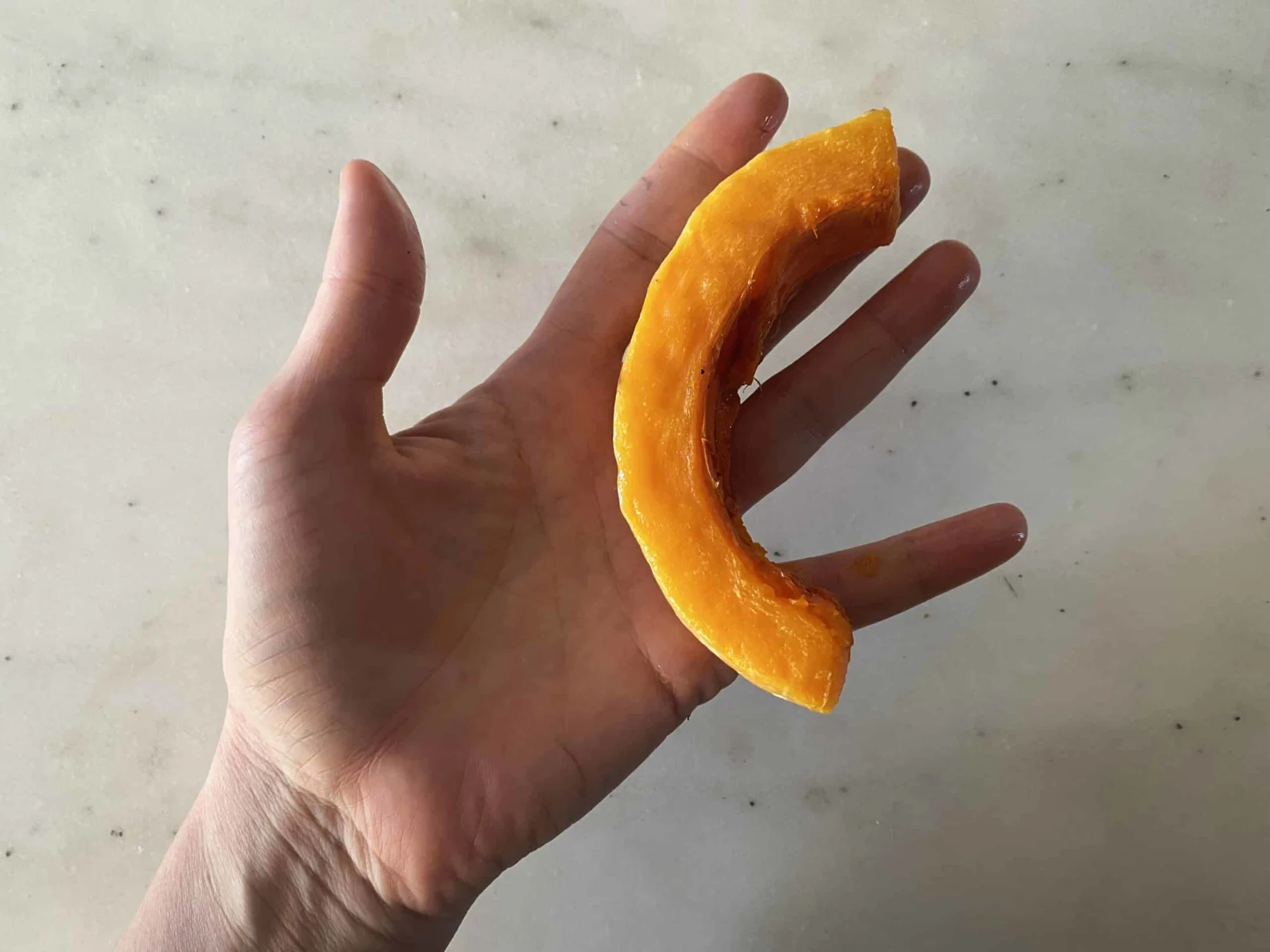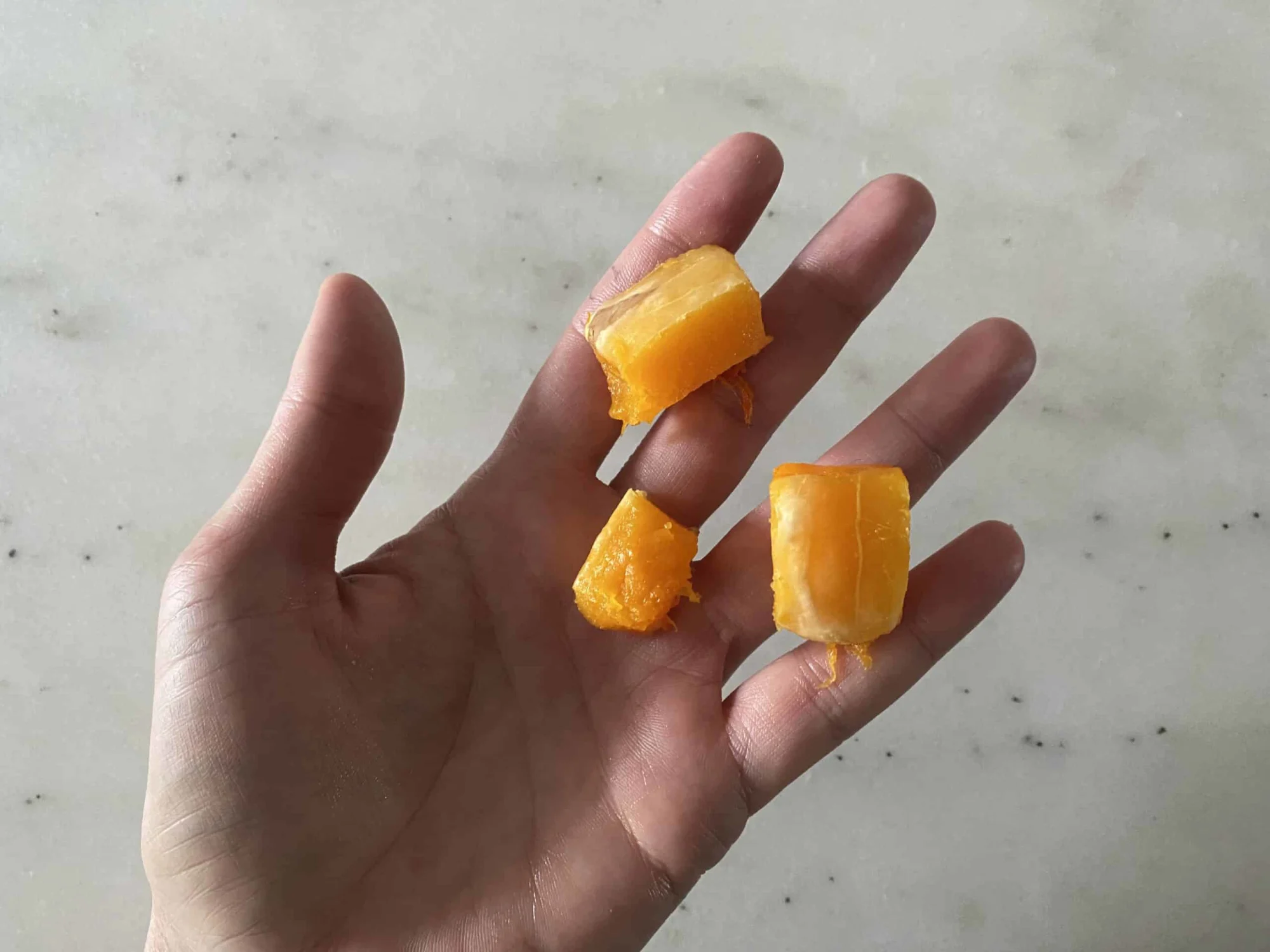Access our First Foods® Database in the Solid Starts App.
Learn moreButternut Squash
Vegetable
Age Suggestion
6 months
Iron-Rich
No
Common Allergen
No

When can babies have butternut squash?
Butternut squash may be introduced as soon as baby is ready to start solids, which is generally around 6 months of age.
Squash originated in Central America, where the plant has been grown by Indigenous people for thousands of years, but it was not until the 20th century that the modern-day butternut variety was developed. A descendant of the curvy Canadian crookneck and a cousin of calabaza, today’s butternut squash has been cultivated to withstand colder climes outside of the tropical and subtropical regions in which the native plant thrives.
How do you serve butternut squash to babies?
Every baby develops on their own timeline, and the suggestions on how to cut or prepare particular foods are generalizations for a broad audience.
6 months old +:
Offer well-cooked crescent-shaped pieces or mashed butternut squash for baby to eat with their hands or from a pre-loaded spoon. If a big piece of food from the crescent-shaped pieces breaks off while eating, stay calm and give baby a chance to work the food forward independently.
9 months old +:
Serve bite-size pieces of well-cooked butternut squash for baby to practice their developing pincer grasp (where the thumb and pointer finger meet) and consider continuing to offer large pieces of well-cooked butternut squash for biting practice. Alternatively, continue serving mashed butternut squash.
12 months old +:
Offer bite-sized pieces of well-cooked butternut squash along with a fork to encourage utensil practice. If the child is not interested in using their fork or spoon, keep in mind that using utensils can be exhausting for new eaters, and many toddlers toggle back and forth between feeding themselves with their fingers and practicing with utensils. Try not to apply too much pressure—consistent and accurate utensil use will come in due time, often after the second birthday.


How to cut raw butternut squash before cooking for babies
Videos
Is butternut squash a choking hazard for babies?
No. Cooked butternut squash presents a low risk when safely prepared for a child’s age and developmental ability, though, in theory, an individual could choke on any food. To reduce the risk, prepare and serve butternut squash in an age-appropriate way. As always, make sure you create a safe eating environment and stay within an arm’s reach of baby during meals.
Learn the signs of choking and gagging and more about choking first aid in our free guides, Infant Rescue and Toddler Rescue.
Is butternut squash a common allergen?
No. Allergies to butternut squash are rare, though it’s not uncommon to get an itchy rash on the hands after handling winter squashes. To minimize any reaction, wash your hands after preparing the squash. Also, apply a barrier ointment (such as pure white petroleum jelly) to baby’s face before eating, and wash face and hands after eating.
As you would when introducing any new food, start by offering a small quantity on its own for the first few servings. If there is no adverse reaction, gradually increase the quantity over future meals.
Is butternut squash healthy for babies?
Yes. Butternut squash is an excellent source of fiber and offers plenty of vitamin A for eyesight, B vitamins for healthy blood, vitamin C for resilient skin, and vitamin E for brain development. Vitamin C also helps baby absorb iron from plant-based foods, so consider serving butternut squash with iron-rich foods like beans, lentils, nuts, and seeds. Lastly, butternut squash is high in carotenoids, some of which our bodies convert to vitamin A. In fact, the longer that butternut squash is allowed to cure after harvest, the more carotenoids it produces. Studies indicate that carotenoids may reduce the risk of cancer and help regulate free radicals that our bodies naturally produce.
Do I need to start solids with purees?
You can if you’d like, but there's no developmental need to start with textureless food. Babies can be served modified versions of what you eat. Use our First Foods Database to find how to safely serve any food.
What are some great first foods for babies?
There are many wonderful options. Look for foods that are easy for baby to feed to themselves, that are low in choking risk, and that offer nutrients babies need, such as iron. A few of our favorite first foods include cooked broccoli, oatmeal, and mango pits.
Our Team
Written by
Expert Tips Delivered to Your Inbox
Sign up for weekly tips, recipes and more!
Copyright © 2026 • Solid Starts Inc








